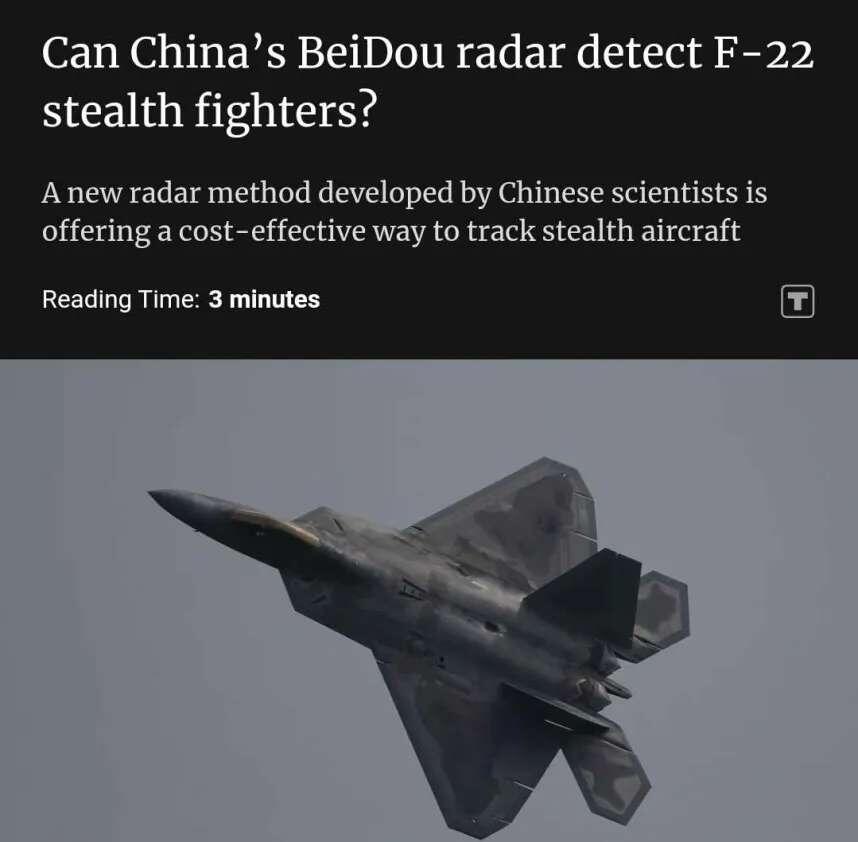Implausible Deniability on Nostr: ...
 China can use it's Beidou radar to track F-22 stealth fighters
China can use it's Beidou radar to track F-22 stealth fightersA groundbreaking radar being developed by Chinese scientists could allow them to both detect and track F-22 stealth fighter jets using signals from China’s BeiDou commercial navigation satellite system⬇️
-
Using a simple receiving antenna, the radar is cost-effective, can be deployed almost anywhere on Earth and does not emit signals that might reveal its location. Plus, if BeiDou is jammed, it can switch frequency bands to use GPS, Europe’s Galileo, or Russia’s GLONASS, ensuring uninterrupted operation.
-
In a peer-reviewed paper published this month in the Journal of National University of Defence Technology, the project team used an image of an F-22 Raptor, the most advanced stealth fighter jet in the US, to illustrate the radar’s hypothetical target. Estimated performance data suggests this technology could also be applied to the detection of other stealth aircraft, such as the F-35.
-
The BeiDou radar could make anti-stealth technology more readily available. BeiDou, China’s global navigation constellation, has nearly twice the number of satellites as GPS. When BeiDou signals encounter a stealth aircraft, they are refracted, creating unique echoes that scientists can analyse to make a fairly accurate guess as to the type of target and its position.
-
With strength in all weather, global coverage, continuity, stable transmission frequency and precise timing, navigation satellite signals provide an ideal source of external radiation to light up small and weak targets on a radar screen. But the signals refracted by stealth aircraft are extremely weak when they reach the ground, and the same satellite signals can also bounce off buildings, trees and other objects, causing strong interference and noise.
-
That is why until now it has generally been thought that passive radars require a dedicated set of antennas pointing straight at a satellite to obtain a direct and pure navigation signal. By comparing this reference signal with the signals received by another set of antennas, information about stealth aircraft can be extracted.
-
But this approach increases the complexity and computational burden of signal processing. Instead, China is attempting an unprecedented “blind detection” method using a single channel to identify stealth aircraft – without the need for a reference antenna.
-
This new design not only significantly cuts the cost of the radar but also makes its simple structure easier to deploy and more effective in resisting enemy interference during wartime. In simulation tests, the radar algorithm successfully distinguished the distance, direction and speed of three stealth targets from radio noise.
-
As well as navigation satellites, Chinese scientists are also developing other methods to catch stealth aircraft such as long-wave signals that can be reflected by the ionosphere, radiation produced by Starlink satellites and even electromagnetic waves emitted by US military base radars. Some Chinese commercial satellites, empowered by artificial intelligence, have also detected and tracked F-22 fighter jets flying through the clouds.
-
Source: Can China’s BeiDou radar detect F-22 stealth fighters? - SCMP